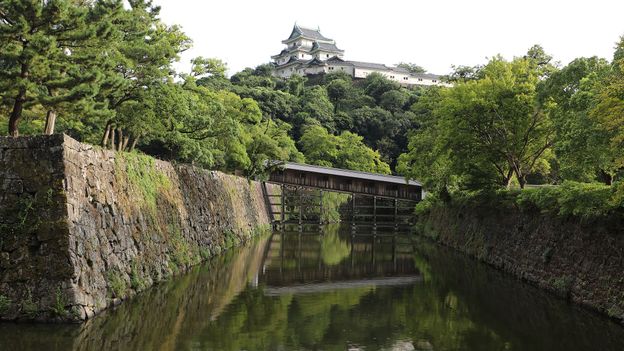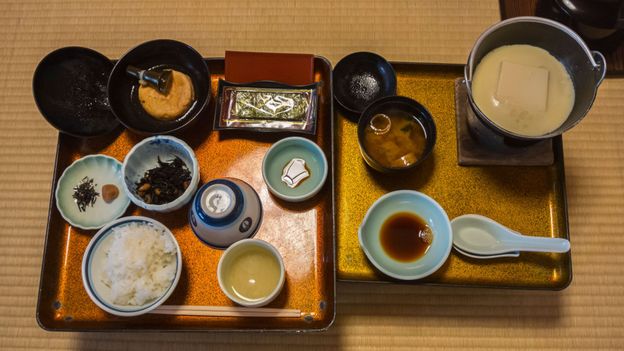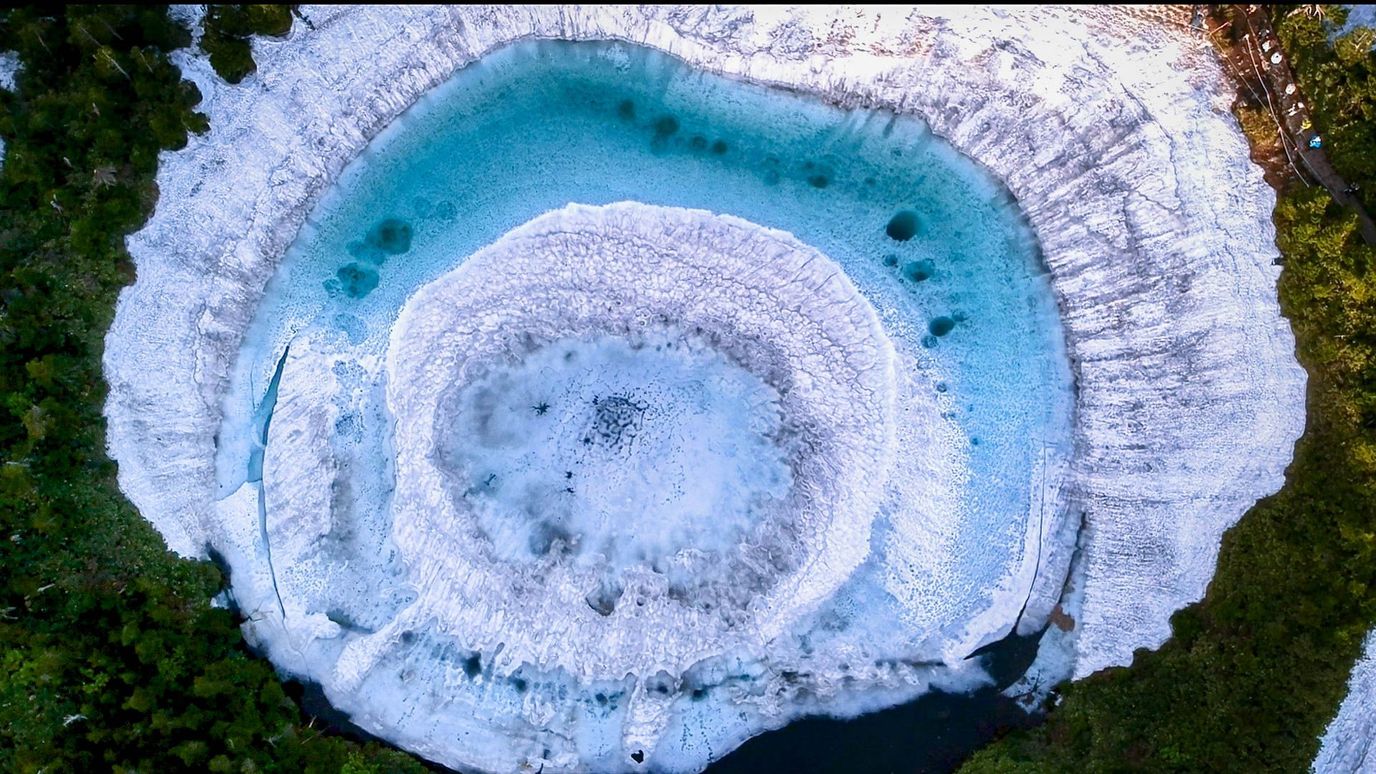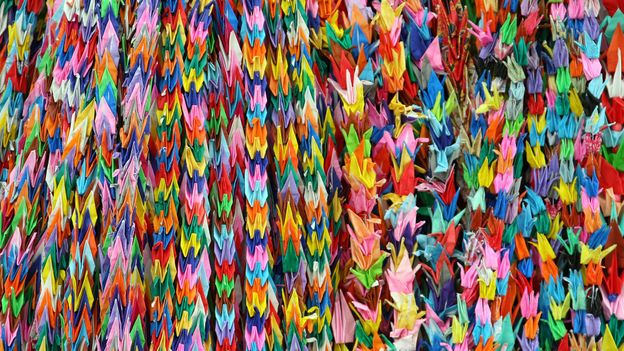By the time I made the hike down the long pathway from the top of Kyoto’s Fushimi Inari to the houses below, I was thirsty. Which was convenient, since many local residents take advantage of foot traffic from the mountainside Shinto shrine by hosting small cafes in their homes. It was on that winding street that I first encountered amazake, an ancient, non-alcoholic, lightly fermented rice drink, which a helpful English sign noted could be served “hot or cold”.
Our coverage during coronavirus
While travelling is on hold due to the coronavirus outbreak, BBC Travel will continue to inform and inspire our readers who want to learn about the world as much as they want to travel there, offering stories that celebrate the people, places and cultures that make this world so wonderfully diverse and amazing.
For travel information and stories specifically related to coronavirus, please read the latest updates from our colleagues at BBC News.
I looked at the faintly sweet and creamy drink as a reward for my physical activity, one that, like kombucha, promised to replenish me after physical activity. But what my ¥400 (£3) bought me was actually a microcosm of Japanese culinary history.
First developed in the Kofun period (around 250 to 538AD), amazake was originally a food fermentation and preservation technique, created by boiling rice, water and koji, a filamentous fungus that is also used in the fermentation of miso, natto and soy sauce, for eight to 10 hours. The resulting drink, which is packed full of nutrients and gut-friendly bacteria, became so popular that it’s even mentioned in the Nihon Shoki, a text compiled in 720AD that comprises the oldest official history of Japan.
Since then, the drink has seen several rises and falls in popularity. Sales jumped 134.8% between 2016 and 2017, according to food and drink exhibition Foodex Japan, at the time that at-home fermentation became a trendy pastime. The drink then continued its popularity in 2019, thanks in no small part to boyband Kanjani Eight, who were hired to act as spokespeople for Hiyashi Amazake, a popular brand throughout Japan. Amazake also has a regular presence in cafes and convenience stores across the country, with locals sipping on it as a morning treat or afternoon pick-me-up.
You may also be interested in:
• Did the Dutch steal this superfood?
• Asia’s ant-aging ‘red diamond’
• Japan’s secret udon mecca
Hiroshi Sugihara (杉原大), a fishmonger and fermentation enthusiast originally from Japan’s Aichi prefecture who relocated to Perth, Australia, has seen the rise of fermentation culture firsthand. His Facebook group THE BREW LIFE-発酵生活 has swelled to more than 5,900 members worldwide since its creation in 2014. Already a fan of fermenting miso and doburoku (a form of sake), he enjoyed introducing amazake, a drink from his childhood, to the group.
“It was very interesting and there were mixed reactions from Caucasian [members] but Asians were able to relate [it] to some of their traditional sweets,” he said.
Sugihara fondly recalls drinking hot amazake at temples on New Year’s Eve. Because the beverage is believed to have warming qualities (particularly due to ginger, which is often used to add flavour), it tends to be heavily consumed during the winter months, a period that includes several major holidays, including the Hinamatsuri “Doll Festival”. This has resulted in many Japanese people considering the drink as a tie to both their past and current national culture. As Shihoko Ura, author of food blog Chopstick Chronicles explains, her memories of amazake are laced with a fair amount of sentimentality, particularly now that she’s migrated to Australia.
“I used to be a Red Cross-trained RN in Ise City, Mie prefecture, where there is [the] famous Ise Shrine,” she recalled. “Ise shrine served free amazake for worshippers, and we first-aid employees were also offered the drink. I was always looking forward to the sweet treat when I had a little break in [my] eight-hour shift.”
Amazake is a sugary drink, as hinted at by its name, which translates to “sweet sake”, even though it only contains trace amounts of alcohol due to the fermentation process. Because of that translation, finding it in convenience stores can be tricky for non-Japanese speakers, who should consider asking for a brand name, such as Hiyashi Amazake or Marumi-koji-honten to avoid being served alcoholic sake instead.
As I sipped on my drink, I was surprised by the lumpy texture, similar to rice porridge, due to the small pieces of koji suspended in the liquid. At roughly 80 calories per 100g, it’s healthier than its creamy texture might initially imply, and fans of amazake claim it can positively impact seemingly every part of the body, including hair growth, weight loss, hangover recovery, sleep cycles and bowel movements.
Because of its nutrients, which include B6, folic acid, ferulic acid, dietary fibre and a notable amount of glucose, many claim it deserves a place in Japan’s stable of hangovers cures, which includes beverages made from turmeric or beef liver, ingredients meant to clean a specific organ. And amazake’s drinkable, easy-to-digest, gluten-free nutrients have also earned it the nickname “drinkable IV”, something that Sugihara confirms from experience.
“I usually have it when I have cold or fever and especially when I don’t have an appetite,” he said. “Amazake is something easier to swallow, yummy, and, thanks to the power of starch-breaking enzyme [found in the koji], it’s sort of pre-digested so kind to the digestive system, too.”
Its qualities are also thought to go beyond health benefits. As Misaki (文咲), a model and Spa LaQua ambassador in Tokyo explains, the drink is also loved by the beauty community. “Vitamin B group contained in amazake is related to metabolism of carbohydrates, lipids and proteins, skin and hair,” she told me via email. “Therefore, beauty effects are expected. Amazake also contains an ingredient called ergothioneine, an antioxidant that has the effect of suppressing skin aging.”
But with any food touted as an ancient cure-all, the big question remains. Does it actually work?
Fermentation is something that we really don’t know much about
Adam Yee, an Austin-based food scientist and host of the podcast My Food Job Rocks, agrees that the minerals and vitamins contained in amazake will help the appearance of skin and hair – if consumed in large amounts. But he also says that the power of suggestion plays a large part in determining a food’s worth. He cited bone broth’s spike in popularity, a beverage that made many similar claims, as one example of good PR. However, he also made it clear that because amazake has an element that’s still very hard to scientifically account for, there may be some hidden, unaccounted truth to these claims.
“Fermentation is something that we really don’t know much about,” he explained. “It’s not like, give it one thing and [it] spits out another thing. Food is so complex, the koji that’s eating whatever it’s around, might actually create something different. You can say the same thing about yeast. Bread and wine are two different things, even though they use the same yeast strain.”
Currently, amazake is barely known outside of Asia. But that looks set to change. Like matcha, which has found its way into desserts both at home and abroad, amazake has become a ubiquitous part of Japanese cuisine, often extending past beverage status. Its continuing success outside of Japan was even predicted by America’s Test Kitchen, who named koji its number one food trend forecast for 2020.
John Sugimura (杉村), corporate executive chef and concept-brand director at PinKU Japanese Street Food in Minneapolis, has turned the drink into a signature part of his offerings, using it both as a creamy base and a way to add unexpected bursts of texture.
“I enjoy delicious baked goods including amazake for its nutrients,” he said. “For me growing up [with Japanese and German parents in the United States], I enjoyed amazake and banana smoothies. I have the most experience making pickles using amazake. And my greatest accomplishment has been incorporating amazake into my ‘sexy sesame dressing’ and salad.
This fusion of cultures may be what will eventually help amazake become a food trend outside of Japan, similar to the way kombucha and quinoa are now widely considered health foods outside their native regions of China/Russia and the Andean region of South America.
Atsushi Nakagawa (中川 貴司), owner of Amazake Co in California, agrees, noting that by linking it to already-popular products, he only has to provide his consumers with a basic introduction to the drink and its potential benefits. After completing apprenticeships at miso and koji microbreweries in Japan over the last few years, he’s pleased at how his knowledge of amazake has sparked the interest of his Los Angeles-based clientele, and how he’s been inspired to play with traditional flavours.
“They get it,” he said. “Especially they love our amazake-mixed latte drinks. We offer Japanese ceremonial matcha, Golden Milk (turmeric, ginger and cinnamon) and horchata flavours. In the last few weeks, more and more people are becoming interested in our Pure Amazake, which is undiluted, so they can use it however they want.”
Every day is a celebration of my Japanese-American heritage
It might be easy to think of amazake as another trendy food. After all, bone broth, Brussels sprouts and açaí have all seen spikes and falls in popularity. However, those who grew up with amazake see its resurgence within Japan and its gradual introduction outside the country as an opportunity to take pride in their culture. As Sugimura explains, it’s that mindset that encourages him to experiment with the drink’s benefits – and has informed much of his career in food as a whole.
“When I was young, I resisted many Japanese traditions out of fear for the code of etiquette,” he said. “As a third-generation Japanese-American lacking mentoring, there were so many expectations on social behaviour, I became overwhelmed. Fast forward, [and now] every day is a celebration of my Japanese-American heritage.”
Amazake is a cup of Japanese history, but the natural energy the beverage delivers still feels very relevant today. I finished my drink, and returned the glass to the cafe owner, ready to continue exploring Kyoto. It might have just been the superfood at work, but not only did I feel nourished, I felt connected, too.
Ancient Eats is a BBC Travel series that puts trendy foods back into their ‘authentic’ context, exploring the cultures and traditions where they were born.
Join more than three million BBC Travel fans by liking us on Facebook, or follow us on Twitter and Instagram.
If you liked this story, sign up for the weekly bbc.com features newsletter called “The Essential List”. A handpicked selection of stories from BBC Future, Culture, Worklife and Travel, delivered to your inbox every Friday.












